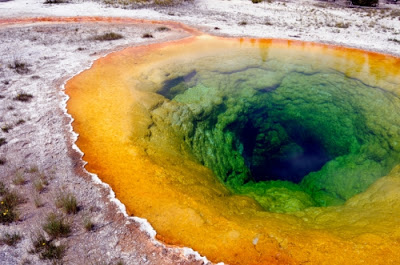
Earth’s oxygen-rich atmosphere emerged in whiffs from a kind of blue-green algae in shallow oceans around 2.5 billion years ago, according to new research from Canadian and US scientists.
These whiffs of oxygen likely happened in the following 100 million years, changing the levels of oxygen in Earth’s atmosphere until enough accumulated to create a permanently oxygenated atmosphere around 2.4 billion years ago – a transition widely known as the Great Oxidation Event.
“The onset of Earth’s surface oxygenation was likely a complex process characterized by multiple whiffs of oxygen until a tipping point was crossed,” said Brian Kendall, a professor of Earth and Environmental Sciences at the University of Waterloo. “Until now, we haven’t been able to tell whether oxygen concentrations 2.5 billion years ago were stable or not. These new data provide a much more conclusive answer to that question.”
The findings are presented in a paper published this month in Science Advances from researchers at Waterloo, University of Alberta, Arizona State University, University of California Riverside, and Georgia Institute of Technology. The team presents new isotopic data showing that a burst of oxygen production by photosynthetic cyanobacteria temporarily increased oxygen concentrations in Earth’s atmosphere.
“One of the questions we ask is: ‘did the evolution of photosynthesis lead directly to an oxygen-rich atmosphere? Or did the transition to today’s world happen in fits-and-starts?” said Professor Ariel Anbar of Arizona State University. “How and why Earth developed an oxygenated atmosphere is one of the most profound puzzles in understanding the history of our planet.”
The new data supports a hypothesis proposed by Anbar and his team in 2007. In Western Australia, they found preliminary evidence of these oxygen whiffs in black shales deposited on the seafloor of an ancient ocean.
The black shales contained high concentrations of the elements molybdenum and rhenium, long before the Great Oxidation Event.
These elements are found in land-based sulphide minerals, which are particularly sensitive to the presence of atmospheric oxygen. Once these minerals react with oxygen, the molybdenum and rhenium are released into rivers and eventually end up deposited on the sea floor.
In the new paper, researchers analyzed the same black shales for the relative abundance of an additional element: osmium. Like molybdenum and rhenium, osmium is also present in continental sulfide minerals. The ratio of two osmium isotopes – 187Os to 188Os – can tell us if the source of osmium was continental sulfide minerals or underwater volcanoes in the deep ocean.
The osmium isotope evidence found in black shales correlates with higher continental weathering as a result of oxygen in the atmosphere. By comparison, slightly younger deposits with lower molybdenum and rhenium concentrations had osmium isotope evidence for less continental input, indicating the oxygen in the atmosphere had disappeared.
Reference:
Transient episodes of mild environmental oxygenation and oxidative continental weathering during the late Archean, Science Advances, DOI: 10.1126/sciadv.1500777
Note: The above post is reprinted from materials provided by University of Waterloo.










